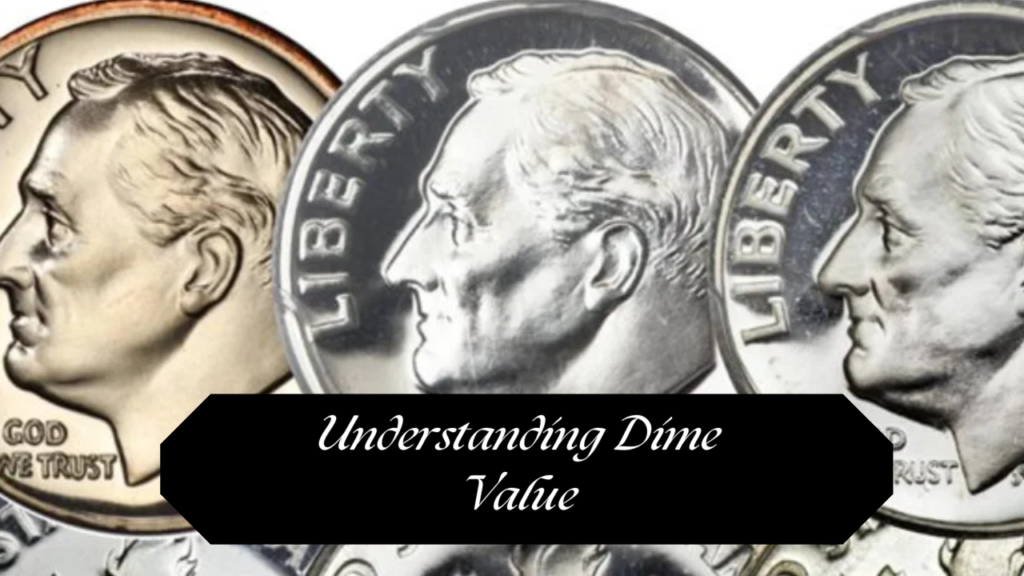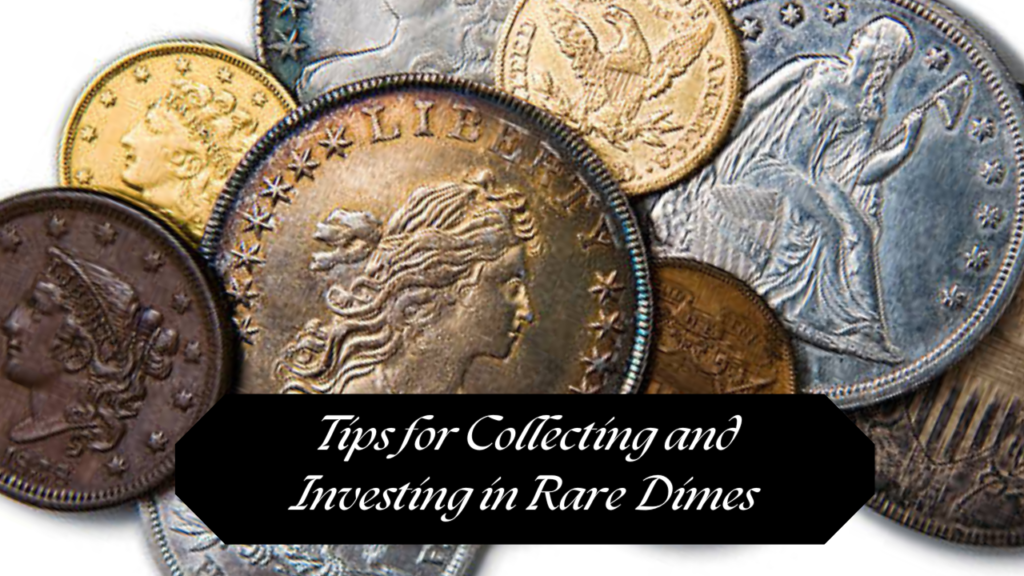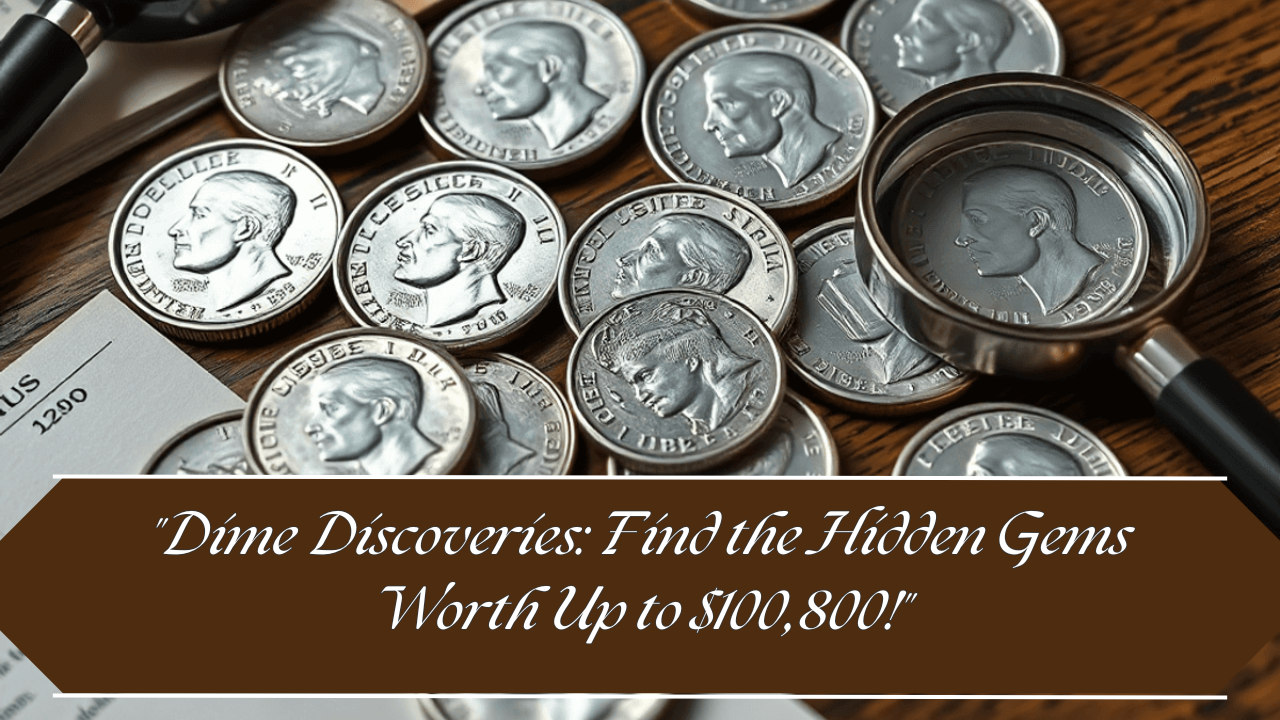Introduction
You might have hidden treasures in your pocket right now. That small, silver dime you’re holding could be worth up to $100,800 – or even millions in exceptional cases.
This guide will turn you into a skilled coin detective, giving you the knowledge to spot valuable dimes that could be worth a lot of money. You’ll learn about:
- The signs that indicate rare and valuable dimes
- Specific dates and mint marks to look out for
- Important features that can increase a dime’s value
- Insights into professional grading
- Tips for taking care of your valuable finds
From the famous 1894-S Barber Dime to modern-day rarities, these tiny treasures have great investment potential. Are you ready to turn your spare change into significant cash? Let’s explore the fascinating world of valuable dimes.
Understanding Dime Value
The market value of dimes is more than just their face value. Several important factors influence this value. The age of a dime adds to its worth, with coins from the 1800s and early 1900s being more valuable because of their historical significance.

Key Factors That Determine Dime Value:
- Mintage numbers – fewer produced coins equal higher value
- Mint mark location and presence
- Strike quality and die variations
- Preservation state and wear patterns
Historical events associated with specific dimes can greatly increase their value. For example, the 1916-D Mercury Dime became more valuable because of its connection to World War I, while the 1894-S Barber Dime is rare due to a unique mintage circumstance.
Professional grading services like PCGS and NGC are crucial in determining the value of dimes. These organizations:
- Authenticate coin legitimacy
- Assess condition on a 70-point scale
- Provide protective holders with certification
- Create standardized market values
The grading of the coin takes into account whether the surface is preserved or not, the quality of the strike, and if the luster has been retained. Even a slight difference in grade can make a huge value difference, especially in very rare specimens.
Key Rare Dimes to Look For
Rare dimes have many hidden treasures and wonders to discover. There are coins small in size but with enormous returns on lucky finds.
1. 1894-S Barber Dime
It is the rarest and most valuable dime in the coin collection of America, as only 24 dimes were minted in San Francisco. Its story and mystery make it unique and add more to the dimes. According to some story, John Daggett was the superintendent of San Francisco Mint. He asked to mint dimes worth 100 dollars for the mint balance during annual audit time.
Key Identification Features:
- “S” mint mark below the wreath on the back
- Liberty head type with distinct hair lines
- Date “1894” well readable on the obverse
- Strong denticles along the edge
Market Values:
- MS65+ in absolute grade: $1.9-2.5 million
- VF-XF in good grade: $100,800-150,000
- Circulated coins: $50,000-75,000
Authentication Tips:
- Verify the position of the mint mark – it must be centered
- Verify the sharpness of the stars’ points
- Check the strike characteristics
- Verify weight: 2.5 grams
- Diameter should measure exactly 17.9mm
Today, only 9 authenticated examples of the 1894-S Barber Dimes can be confirmed to exist in this world. With such rarity, every discovery is newsworthy, and collectors eagerly purchase these pieces of US coinage history.
2. 1916-D Mercury Dime

The 1916-D Mercury Dime is one of the most collected coins in the world. It was the rarest dime in the series because only 264,000 dimes were produced at the Denver Mint. This small production happened during the first year that the Mercury Dime was designed, and this has made it very desirable to collectors.
A well-kept 1916-D Mercury Dime could bring $20,000-$100,000. Of course, the value escalates dramatically with the condition, dependent upon the coin having been graded MS-65 or higher.
Key Identification Features:
- Look for the mint mark “D” situated to the right of the fasces on the reverse
- Look for the classic “Winged Liberty Head” on the obverse
- Authentic specimens have characteristic wear on Liberty’s hair and wing details.
- The date “1916” should have uniform font characteristics
The coin’s surface texture is another feature in the authentication process. Legitimacy has a specific luster and strike quality that can only be found on Denver Mint products of that era. Professional grading services recommend examining the coin under proper lighting for any signs of tampering or restoration.
3. 1982 No Mint Mark Roosevelt Dime
One of the most interesting minting mistakes in U.S. coin history is the 1982 No Mint Mark Roosevelt Dime. Even though it was minted in the Philadelphia Mint, some of the dimes did not have the “P” mint mark, making them instantly rare.
Characteristics of the 1982 No Mint Mark Roosevelt Dime
These error coins feature the following characteristics that separate them from others:
- There is no “P” mark on the front side, or obverse
- Roosevelt standard design features
- Date clearly showing 1982
- Composition regular copper-nickel
- Market Price of the 1982 No Mint Mark Roosevelt Dime
Market Value of the 1982 No Mint Mark Roosevelt Dime
The price value can range within thousands on the basis of its condition:
- Circulated: $50-$100
- Uncirculated: $300-$600
- MS-65 Condition: $2,000-$3,500
How to Identify the 1982 No Mint Mark Roosevelt Dime
Check all dimes dated 1982 for no mint marks.
- Use a loupe to zoom in on the area that should contain the “P”
- The strike quality needs to be of mint official standards
- Check for the appearance of wear that is appropriate to circulated coins
Professional grading services can authenticate alleged 1982 No Mint Mark Roosevelt Dimes thus protecting the buyer from phony versions that have appeared due to their rising value.
4. 1975 No S Roosevelt Dime
The 1975 No S Roosevelt Dime is one of the most interesting errors ever produced in U.S. coins. This is a rare coin that is missing the very important “S” mint mark found on all proof dimes minted at the San Francisco Mint.
Key Characteristics:
- There is no “S” mint mark on the proof coins
- Mirror-like finish
- Deep cameo contrast of fields and design
The value of these exceptional coins has skyrocketed:
- Proof 65: $25,000+
- Pro/67: $35,000+
- Pro/69: $50,000+
This dime remains eligible for professional grading due to existence in restrike form. Rarities exhibit strong differentiation of proof characteristics as described below:
- Extremely sharp strike details
- Deep shiny reflective surfaces
- Rims defined with precision
Fewer than 20 are known to exist with such rarity making it highly sought after by serious collectors, as can be seen in auction selling history, which shows recent, steady price appreciation: a well-preserved example regularly sells for higher prices in the numismatics market.
Tips for Collecting and Investing in Rare Dimes
Starting a valuable collection of dimes requires intelligent planning and expert knowledge. Here’s what you must know:

Essential Collection Practices:
- Store dimes in protective holders or albums that are specifically designed to hold dimes
- Determine to handle coins along their edges to avoid your finger oils from damaging your coins
- Keep a diary of purchase dates, amount paid, and authentication certificate
- Study market trends, using price guides like the Numismatic News and the Coin World.
Building Expert Connections:
- Local Coin Collecting Clubs: A location where experienced collectors can draw experience from them.
- Visit numismatic shows to gain first-hand knowledge of the rare dimes.
- Establish networking with reliable coin dealers specializing in rare dimes.
- Engage online forums regarding coin collecting in sharing experience and knowledge of the coins.
Investment Strategy Tips:
- Buy only the best coins that your budget will afford
- You can purchase certified coins via NGC or PCGS
- Spread out your collection into different series of dimes and the different years
- Leave enough money for professional grading service when you need it.
Always check the credentials of the seller and request certificates of authenticity for high priced purchases. The rare coin market does fluctuate, so continuous market research is a necessary part of successful collecting and investing.
Conclusion: Start Your Journey as a Coin Detective!
Maybe it’s just waiting in plain view. There are countless numismatic opportunities for the dedicated collector and savvy investor. Now, with knowledge on mint marks, coin valuation, and appraisal techniques, the excitement begins on your own personal coin hunt.
Remember: every coin has a story to tell, and the next pocket change might just bring a treasure that’s worth thousands. Join your local coin clubs, look at online communities, and learn more about the rare varieties. You could find yourself hunting for the next rare dime such as the 1894-S Barber or the 1916-D Mercury.
FAQs
What is the purpose of the article ‘Dime Discoveries: How to Spot the Coins Worth Up to $100,800’?
It’s a broad overview of how to appraise valuable dimes and the key influences upon their market values, as well as uncommon dimes to look for in collecting.
What factors influence the value of dimes?
Value drivers for a dime include history, rarity, and professional grading services as the arbiters of their market values.
Why is the 1894-S Barber Dime considered valuable?
The 1894-S Barber Dime is valuable because of its history, its rarity, and the mint mark as determinants for identifying this specific coin.
What tips does the article provide for collecting and investing in rare dimes?
The article outlines the best practices for starting to collect dimes, focusing specifically on the value dimes, noting the need to attend numismatic shows and connect to good coin dealers.

